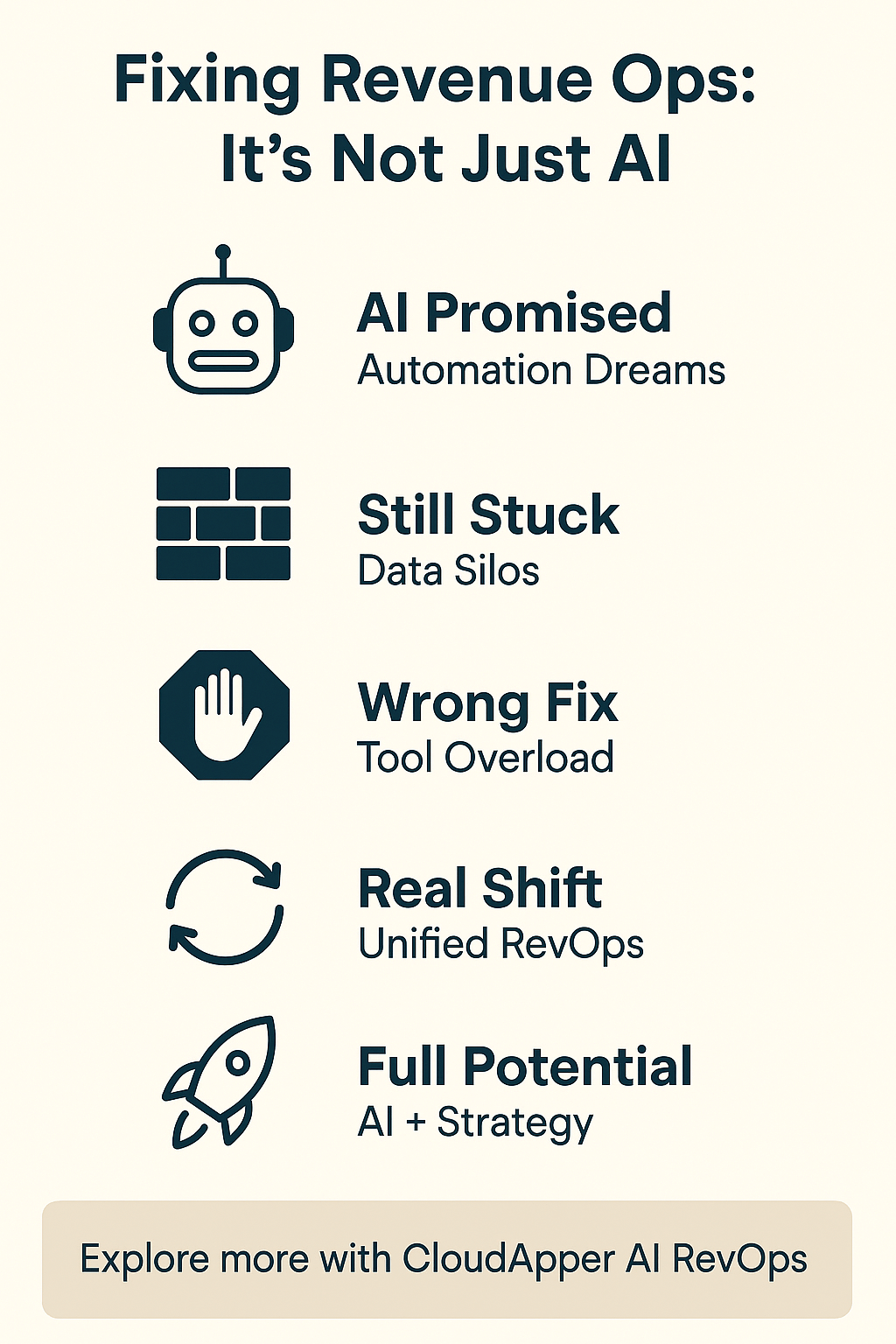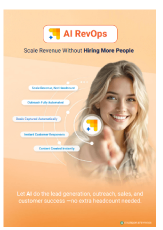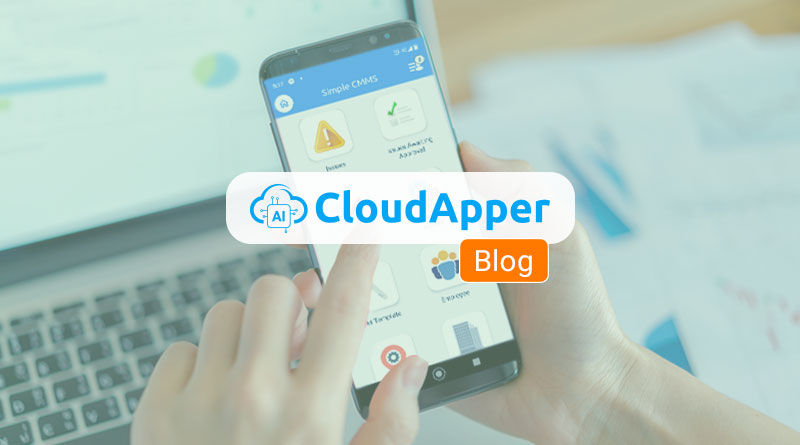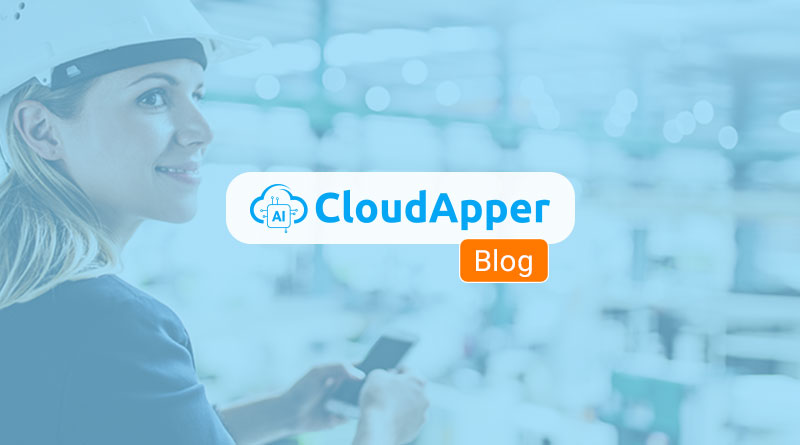Discover how AI integration can revolutionize your revenue operations. Despite investments in AI tools, many companies face persistent challenges. This article explores pain points and provides insights on strategic AI implementation to enhance profitability and streamline processes.
Imagine a world where your revenue team operates seamlessly, with all processes streamlined and profitability soaring. This vision is within reach, thanks to AI integration in revenue operations. AI offers automation and predictive analytics that promise transformative results. Yet, despite significant investments in AI tools, many companies still struggle with persistent challenges. This exploration delves into these pain points and offers insights into how using CloudApper AI RevOps can revolutionize revenue operations.
For more information on CloudApper AI RevOps visit our page here.

The allure of AI as a perfect solution is compelling. AI technologies can automate repetitive tasks, predict customer behavior, and optimize marketing campaigns, seemingly offering a dream solution for revenue teams. CloudApper’s AI solutions can automate sales processes, enhance outreach strategies, and improve customer service efficiency. However, the anticipated seamless transformation is often elusive.
The core misconception is treating AI as a standalone fix for all operational issues. While undeniably powerful, AI is not a silver bullet. Without holistic orchestration and strategic implementation, AI tools achieve limited success. Persistent issues like fragmented data silos, misaligned workflows, and lack of cross-team coordination continue to hinder revenue teams, preventing them from fully leveraging AI’s potential.
Fragmented data poses a significant barrier to effective AI integration. Data is often siloed across departments, complicating efforts to create a unified view of customer interactions and sales pipelines. This fragmentation leads to visibility issues and bottlenecks in lead prioritization and customer engagement.
Disconnected platforms further exacerbate these challenges. When marketing, sales, and customer success teams operate on disparate systems, the seamless flow of information is disrupted. This lack of integration means that even with AI’s predictive analytics, critical insights may be lost, leading to missed revenue opportunities.
For companies to fully harness AI in revenue operations, a shift towards a unified RevOps strategy is essential. This involves aligning teams around a single revenue operations function where AI acts as an enabler. AI agents like Scouting, Sales, Outreach, Amplifier, CSR, and CoreIQ can then realize their full potential.
A cohesive RevOps strategy ensures robust data integration, allowing teams to share insights and collaborate effectively. By breaking down data silos and fostering cross-team coordination, organizations can create a seamless customer journey from marketing to sales and customer success. AI can be leveraged for hyper-personalization and intelligent automation, delivering tailored experiences that drive engagement and conversion.
To ensure AI integration delivers the desired ROI, companies must adopt a strategic approach. Practical solutions include robust data integration, unifying data across platforms to provide a comprehensive view of customer interactions. This integration is crucial for accurate predictive analytics and informed decision-making.
Upskilling teams is also vital. Revenue teams need the skills to interpret AI-driven insights and make data-driven decisions. Continuous learning and development are essential in the rapidly evolving AI landscape.
Cohesive workflow alignment is another critical factor. Workflows across marketing, sales, and customer success must align with the overall RevOps strategy. This alignment facilitates smooth handoffs and consistent customer experiences.
A holistic approach to AI integration, considering people, processes, and technology, ensures that AI tools are effectively embedded within the organization’s operations.
Adopting a human-centric perspective on AI adoption is crucial. Companies must see technology as a tool to empower teams, not replace them. By focusing on operational realities and addressing structural challenges, decision-makers can avoid common pitfalls and maximize the benefits of AI investments.
The journey to effective AI integration in revenue operations is challenging but rewarding. By moving beyond the AI hype and focusing on strategic implementation, companies can overcome persistent pain points and unlock new revenue opportunities. CloudApper AI RevOps provides the tools needed for this transformation, enabling organizations to leverage AI within a cohesive RevOps strategy.
As the trend towards unified RevOps functions grows, companies embracing this approach will be well-positioned to thrive. With the right strategy, AI integration can become a powerful catalyst for growth, driving efficiency and enhancing the customer experience. By addressing core issues and fostering collaboration, revenue teams can achieve operational excellence and maximize their ROI on AI investments.
To explore more about how AI can transform your business outcomes, consider reading Can Unlocking the Power of AI in Sales Operations Truly Transform Your Business Outcomes?. Additionally, for insights on building a lean revenue machine, check out How to Build a Lean Revenue Machine With AI and Automation.

Scale Revenue. No Extra Hires
AI Agents that find prospects, nurture leads, engage visitors,
close deals & support customers - automatically
How to Integrate AI into Revenue Operations
- Conduct a Data Audit: Start by assessing your current data landscape to identify silos and integration gaps. This step is crucial for ensuring a unified view of customer interactions and sales pipelines.
- Align Teams Around RevOps: Foster collaboration between marketing, sales, and customer success teams by aligning them under a single RevOps strategy. This alignment will facilitate smooth workflows and consistent customer experiences.
- Implement AI Tools Strategically: Choose AI tools that complement your RevOps strategy. AI agents like Scouting, Sales, and CoreIQ can enhance various functions when integrated effectively. For more information, explore the role of AI in modern business in Unlocking Sales Potential: The Role of AI in Modern Business.
- Upskill Your Team: Invest in training programs to help your team interpret AI-driven insights and make data-driven decisions. Continuous learning is essential in the rapidly evolving AI landscape.
- Monitor and Optimize: Regularly review AI tool performance and RevOps processes to identify areas for improvement. Use insights gained to refine strategies and enhance outcomes.
For more detailed guidance on building a lean revenue machine with AI, check out How to Build a Lean Revenue Machine With AI and Automation.

Scale Revenue Without Hiring More People
Meet the AI Team Behind Your Revenue Growth
CloudApper’s AI Revenue Operations Team helps you scale without the cost and complexity of hiring.
Learn more | Download BrochureFrequently Asked Questions
What are the main challenges of integrating AI into revenue operations?
Integrating AI into revenue operations often faces challenges such as fragmented data silos, misaligned workflows, and lack of cross-team coordination. These issues can hinder the seamless flow of information and prevent teams from fully leveraging AI's potential. For more insights, you can read about Unlocking the Full Potential of Revenue Operations with CloudApper AI.
How can AI enhance the efficiency of revenue teams?
AI can automate repetitive tasks, predict customer behavior, and optimize marketing campaigns, which enhances the efficiency of revenue teams. It can also facilitate hyper-personalization and intelligent automation, providing tailored experiences that drive engagement and conversion. Learn more about the advantages of automating sales with AI in our article on Automating Sales with CloudApper AI RevOps.
What is a unified RevOps strategy and why is it important?
A unified RevOps strategy aligns marketing, sales, and customer success teams around a single revenue operations function. This alignment is crucial for breaking down data silos, fostering cross-team collaboration, and creating a seamless customer journey. Discover more about how AI can transform business outcomes in our article Can Unlocking the Power of AI in Sales Operations Truly Transform Your Business Outcomes?.
What is CloudApper AI Platform?
CloudApper AI is an advanced platform that enables organizations to integrate AI into their existing enterprise systems effortlessly, without the need for technical expertise, costly development, or upgrading the underlying infrastructure. By transforming legacy systems into AI-capable solutions, CloudApper allows companies to harness the power of Generative AI quickly and efficiently. This approach has been successfully implemented with leading systems like UKG, Workday, Oracle, Paradox, Amazon AWS Bedrock and can be applied across various industries, helping businesses enhance productivity, automate processes, and gain deeper insights without the usual complexities. With CloudApper AI, you can start experiencing the transformative benefits of AI today. Learn More
AI RevOps Agent
Scale Revenue Without Hiring More People
Download Brochure


Amplifier Agent
Keeps Your Brand Visible With Articles & Social Media Content That Connects.
Learn More
Outreach Agent
Launches Email & SMS Campaigns That Reach Out on Time and Actually Convert.
Learn More


- Works with
Similar Posts

Drive B2B SaaS Sales Growth Through Smart Automated Email Sequences

Automated Email Campaign Sequencing for Customer Retention Strategies

















